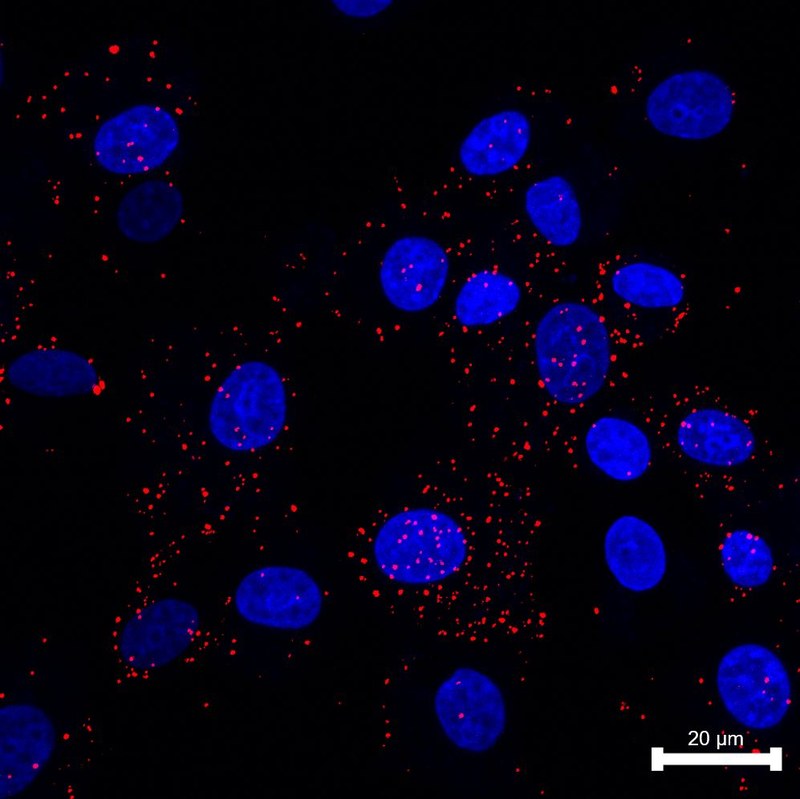Main Content
The antiviral activity of extracellular vesicles in body fluids

Attachment of Zika virions (red) to plasma membranes (unstained) of individual cells (blue nuclei).
The mosquito- and blood-borne Zika virus is also shed into various other body fluids. Interestingly, semen, saliva, and stored human breast milk reduce viral infection rates, which explains infrequent or absent transmission via sexual intercourse, deep-kissing, or breast feeding (Müller et al., Nat Commun, 2018; Conzelmann et al., Viruses, 2019; Conzelmann et al., J Extracell Vesicles, 2020). The responsible entities in semen and saliva are extracellular vesicles that prevent viral entry into target cells. These vesicles are a heterogeneous mixture of membranous particles that contain and transfer RNA, proteins, and lipids and are highly abundant in body fluids. They are involved in intracellular communication and multiple physiological and pathological processes and can promote or prevent virus infection. Their antiviral activity in body fluids represents a novel mechanism of innate immune defense but packaging, delivery, signal transduction, and effector functions of extracellular vesicles are poorly understood. We investigate this interplay between extracellular vesicles and emerging viruses and how these vesicles contribute to antiviral immunity. Our vision is to understand and induce or artificially design extracellular vesicles for prevention and/or treatment of viral infections.